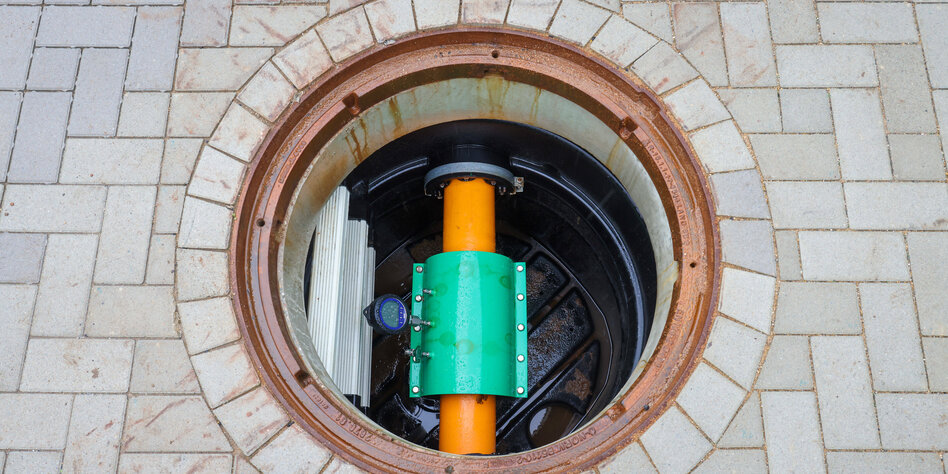New Pipelines From Norway And Spain Hydrogen Pipes From North And South

New pipelines from Norway and Spain: hydrogen pipes running from the North and South New pipelines from Norway and Spain are designed to transport "green" gas to Germany for industrial use. At the same time, a run on government aid starts.
BERLIN taz | Europe's industry is vying for billions in subsidies for the creation of a hydrogen infrastructure. Photo credit: Rupert Oberhäuser/imago Hydrogen march: measuring shaft in Holzwickede (NRW). On Monday, the German gas network operator Gascade—which was formerly a member of the Gazprom corporate group—and the Belgian long-distance gas operator Fluxys made an announcement indicating that they were moving forward with plans for a pipeline through the North Sea.
The "linchpin of the future German and European offshore hydrogen infrastructure," according to Gascade Managing Director Christoph von dem Bussche, should be this. The more than 400-kilometer route is intended to function as a collection pipeline; on the one hand, it can collect hydrogen from various production sites while, on the other, linking the infrastructures of the North Sea bordering nations.
The planning companies hope that the EU Commission will identify the so-called AquaDuctus project as a "particularly important European infrastructure project," which would qualify it for billions of dollars in EU funding. A strategic agreement, the main component of which is the construction of a joint hydrogen pipeline, was signed in Oslo by Norwegian Prime Minister Jonas Gahr Stre and Federal Economics Minister Robert Habeck (Greens) just under three weeks prior to the company's announcement.
The proposed offshore wind farm "SEN-1" in the German Bight is to be connected to AquaDuctus as a first step, in accordance with Gascade's ideas. The first hydrogen should then start to flow in 2030.
The hydrogen infrastructure of European nations bordering the North Sea and hydrogen wind farms that are further away could be integrated in the years that followed, according to Gascade. By 2035, the North Sea pipeline should be able to deliver up to a million tons of hydrogen to Germany every year.
The "H2Med" hydrogen pipeline is planned. Germany should receive not only "green" energy from the north but also "green" energy from the south, which is currently being strongly promoted in the EU and in the federal states. The "H2Med" hydrogen pipeline, which was intended to run from Spain to Marseille in southern France, will now also reach Germany, thanks to a recent agreement between Germany and France.
Strong industrial cooperation in the hydrogen industry already exists between the two nations, as demonstrated by the announcement last summer of a joint venture between Siemens Energy and the French company Air Liquide. In order to produce industrial series electrolysers, the joint venture wants to establish a factory in Berlin.
The project "Norman'Hy" in Port-Jérôme, Normandy, will simultaneously see the construction of electrolysers with 200 megawatt capacities. For the benefit of the European grid, they are to produce hydrogen.
German industry, which wants to use the gas to cut down on its consumption of fossil fuels, will purchase the gas from the various nations. The Federal Ministry of Research explains that "green hydrogen is essential to achieving the Paris climate protection goals.".
Strategic partnerships with South and West Africa and Australia had already been established as a result of this, from which the gas would need to be shipped to Europe. The primary reason for concentrating on industry as a customer is that a pure hydrogen network is technically simpler and less expensive to set up for large consumers than it would be if the current, finely ramified gas distribution network were converted to operate with high hydrogen proportions.
The gas would then need to be transported to Europe by ship from there. The primary reason for concentrating on industry as a customer is that a pure hydrogen network is technically simpler and less expensive to set up for large consumers than it would be if the current, finely ramified gas distribution network were converted to operate with high hydrogen proportions.
The gas would then need to be transported to Europe by ship from there. The primary reason for concentrating on industry as a customer is that a pure hydrogen network is technically simpler and less expensive to set up for large consumers than it would be if the current, finely ramified gas distribution network were converted to operate with high hydrogen proportions.
The primary reason for concentrating on industry as a customer is that a pure hydrogen network is technically simpler and less expensive to set up for large consumers than it would be if the current, finely ramified gas distribution network were converted to operate with high hydrogen proportions.
Post a Comment for "New Pipelines From Norway And Spain Hydrogen Pipes From North And South"